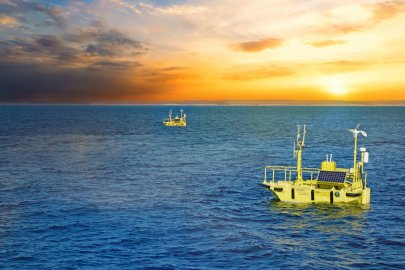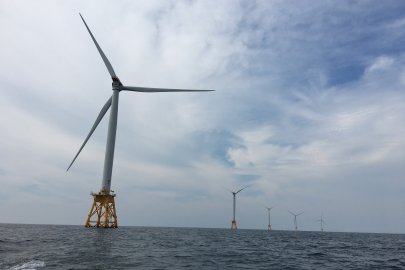Using funding from DOE’s Competitiveness Improvement Project (CIP), Intergrid LLC has introduced the first inverter developed specifically for small- and medium-scale wind turbines.
Wind Energy Technologies Office
June 2, 2021Intergrid inverter a game changer for small- and medium-scale wind turbine sectors
Small- and medium-scale wind turbines are central to the distributed wind industry, but the market currently lacks off-the-shelf power inverters designed specifically for operation with such turbines. Using funding from DOE’s Competitiveness Improvement Project (CIP), New-Hampshire-based small business Intergrid LLC has introduced a new 25-kilowatt (kW) inverter to fill this critical gap.
Inverters change the variable voltage and frequency produced by a wind turbine’s generator into power that can be used by homes and businesses or supplied to the electric grid. Until 2016, manufacturers could obtain ready-made inverters for their small wind turbines. But growth of the solar industry around that time led to an unintended side effect: inverter manufacturers abandoned the distributed wind market to focus on inverters for distributed solar.
That’s where Intergrid—and the CIP—came in.
Intergrid received a CIP component innovation award in 2014 to develop a modular power inverter for wind turbines under 25 kW. The inverter meets the latest grid interconnection standards while incorporating the ability to operate independently from the grid when combined with storage, providing resilient backup power.
“Under the CIP, Intergrid’s new 25-kW inverter began as a paper concept and has completed certification to current grid interconnection standards,” said National Renewable Energy Laboratory (NREL) Distributed Wind Project Lead Ian Baring-Gould. “As the first inverter developed specifically for small- and medium-scale wind systems, it’s truly a game changer for the distributed wind industry.”
Managed by NREL on behalf of the Wind Energy Technologies Office, the CIP supports innovation to advance wind energy as a low-cost distributed energy resource option. Distributed wind, or on-site wind power, holds promise for numerous applications—from homeowners seeking low-cost renewable energy for their homes and electric-vehicle charging to farmers and other small businesses wanting more resilient on-site power.
Since 2012, NREL has awarded 44 subcontracts to 23 companies under the CIP, totaling $10.62 million of Department of Energy funding while leveraging $5.41 million in additional private-sector investment.

The Competitiveness Improvement Project is making it possible for companies to develop innovative technologies, such as this modular power inverter from Intergrid, for the distributed wind industry. Photos by Rob Wills, Intergrid
"Product development and certification for power electronics products are complex and expensive," said Intergrid President Robert Wills. "But thanks to support from the DOE CIP program, Intergrid has been able to take our inverter from concept to reality and provide a product that meets the needs of U.S. wind turbine manufacturers."
Partnering with manufacturer and CIP 2020 awardee Matric Limited of Seneca, Pennsylvania, Intergrid’s 25-kW inverter will go into mass production. Delivery is planned to start in 2021 with initial capacity to produce more than 1,000 units per year.
The modular design of Intergrid’s inverter also enables it to be scaled up for use with medium-scale turbines with capacities of hundreds of kilowatts. Under a CIP 2020 award, Coraopolis, Pennsylvania-based Windurance will build on the existing Intergrid wind power inverter platform to develop an inverter and control system for wind generators in the 50-kW to 300-kW size class. This will support a broader range of wind turbine sizes for the distributed wind market and enable wind technology to become a more versatile distributed energy resource option.
“Intergrid’s partnerships with Matric and Windurance and the CIP funding that supports our work are a perfect match,” Wills said. “As small businesses, we can complement each other’s resources to not only bring the Intergrid inverter to market, but to also make a wider range of distributed wind turbines less expensive to purchase, install, and maintain."
For more information about CIP, read the CIP fact sheet.
Subscribe to learn more about WETO R&D projects, news, accomplishments, and recent publications.
Subscribe to the WETO e-newsletter to stay informed on the latest wind energy news, events, publications, and updates.










